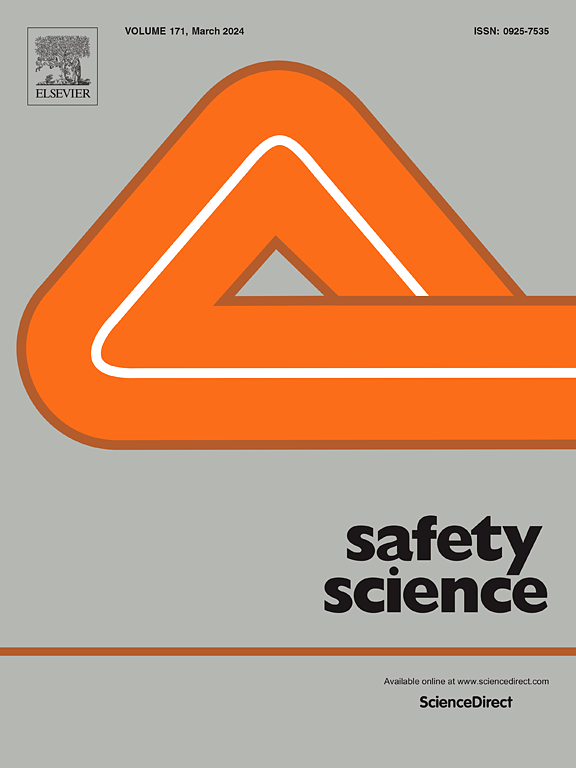Tensions influencing the risk management of hexavalent chromium exposure at Swedish workplaces: evidence from the SafeChrom project
IF 5.4
1区 工程技术
Q1 ENGINEERING, INDUSTRIAL
引用次数: 0
Abstract
In this study we investigate risk management trade-offs by evaluating how key persons at workplaces with a potential for exposure to hexavalent chromium (Cr(VI)) reason about what is practically possible in terms of exposure reduction. While the included companies (N = 14) represented different types of processes and work-tasks, interviewees all identified that many types of hazards compete for attention at the workplaces, making systematic work environment management a complex undertaking. Risk management efforts are directed by internal and external demands, and the hazard of Cr(VI) was in these cases often overshadowed by other workplace hazards. Interviewees described the overarching aim of continuous improvement, however, zero exposure was not feasible given that the production yielding the Cr(VI) exposure was found a fixed prerequisite or to have other beneficial values (for instance promoting environmental sustainability). What constitutes an exposure at a level that is as low as reasonably practicable was not easily identifiable by interviewees. There were various sources of demands on risk management, legal and corporate but also more personal or moral. Interviewees perceived Occupational Exposure Limits (OELs) as a clear line for unacceptable exposures, however, variability and how it influences compliance were challenging concepts. The socio-economic aspect of Swedish OELs was generally not raised. We conclude that reasonably practicable is a difficult concept, likely leading to wide variability in health risk across workplaces. We recommend explicit policies on acceptable risk levels for OELs for non-threshold carcinogens as they clarify the socio-economic compromise underlying such OELs.
影响瑞典工作场所六价铬暴露风险管理的紧张关系:来自安全室项目的证据
在本研究中,我们通过评估工作场所中可能暴露于六价铬(Cr(VI))的关键人员如何推断在减少暴露方面实际可能的情况,来调查风险管理权衡。虽然所包括的公司(N = 14)代表不同类型的流程和工作任务,但受访者都认为,许多类型的危害在工作场所争夺注意力,使系统的工作环境管理成为一项复杂的任务。风险管理工作受到内部和外部需求的指导,在这些情况下,Cr(VI)的危害往往被其他工作场所危害所掩盖。受访者描述了持续改进的总体目标,然而,零暴露是不可实现的,因为产生Cr(VI)暴露的生产被认为是一个固定的先决条件或具有其他有益的价值(例如促进环境可持续性)。在合理可行的水平下,什么是暴露,受访者不容易确定。风险管理方面的需求来源多种多样,既有法律方面的,也有企业方面的,但更多的是个人或道德方面的。受访者认为职业暴露限值(OELs)是不可接受暴露的明确界限,然而,可变性及其如何影响遵从性是具有挑战性的概念。瑞典OELs的社会经济方面一般没有提出。我们的结论是,合理可行是一个困难的概念,可能导致不同工作场所的健康风险存在很大差异。我们建议制定明确的政策,规定非阈值致癌物的OELs可接受风险水平,因为它们阐明了此类OELs背后的社会经济危害。
本文章由计算机程序翻译,如有差异,请以英文原文为准。
求助全文
约1分钟内获得全文
求助全文
来源期刊

Safety Science
管理科学-工程:工业
CiteScore
13.00
自引率
9.80%
发文量
335
审稿时长
53 days
期刊介绍:
Safety Science is multidisciplinary. Its contributors and its audience range from social scientists to engineers. The journal covers the physics and engineering of safety; its social, policy and organizational aspects; the assessment, management and communication of risks; the effectiveness of control and management techniques for safety; standardization, legislation, inspection, insurance, costing aspects, human behavior and safety and the like. Papers addressing the interfaces between technology, people and organizations are especially welcome.
 求助内容:
求助内容: 应助结果提醒方式:
应助结果提醒方式:


